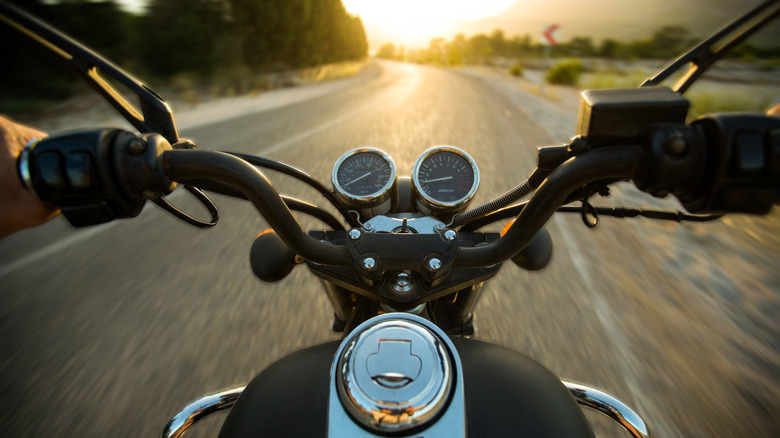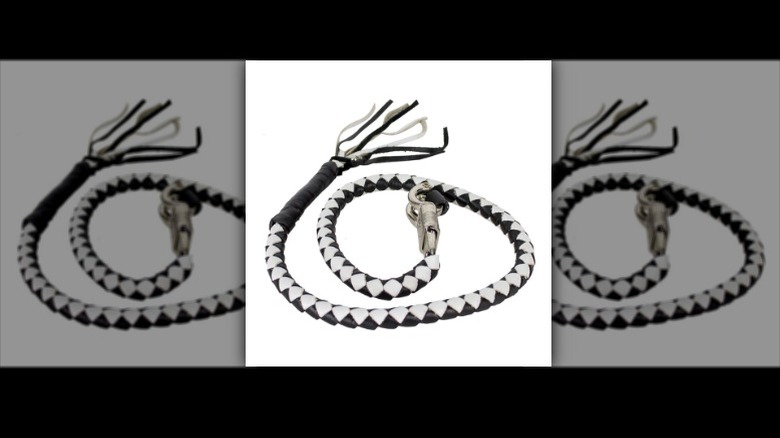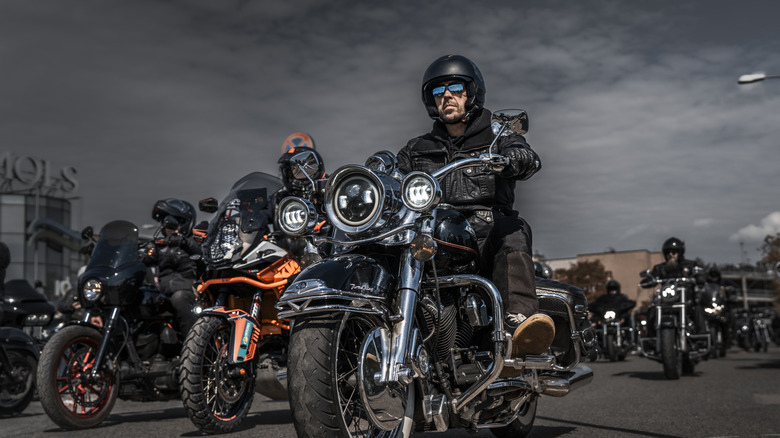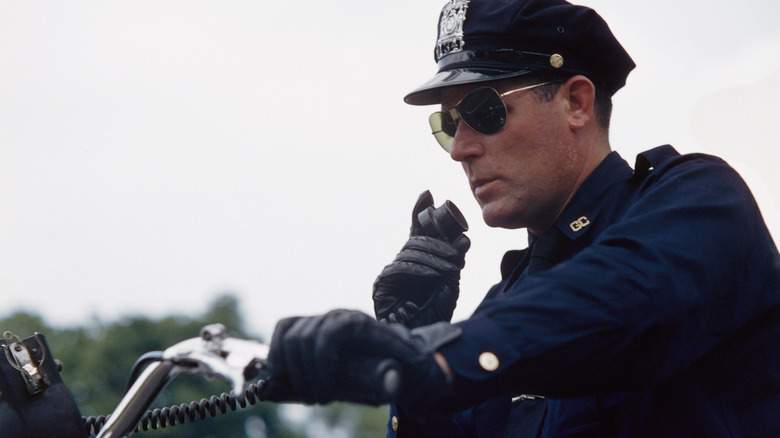Why Do Some Riders Hang Ropes From Motorcycle Handlebars?
If you've ever been cruising down the road and seen a motorcycle with long ropes hanging from its handlebars, you may have had some questions about them. Well, you're not alone and while there's not exactly a clear answer to all those questions, there's certainly a lot to know about these ropes. There's way more to them than meets the eye.
For those who haven't seen these ropes, we're not talking about the kind of tassels one might see on the handlebars of a child's bicycle. These are long, thick ropes that may or may not have fringes on the ends, depending on a rider's personal preference. They can be found in a variety of colors and are often purchased as accessories for motorcyclists who want to add a bit of flair to their ride.
While they may look like purely decorative ropes, they're known among bikers as Get Back Whips, and for many they are indeed just a decoration. However, others consider them a cultural statement, a self-defense tool, and just plain cool. While the name may imply a nefarious purpose, that's not necessarily the case for all Get Back Whips.
So, let's dive into these long strands of rope and understand everything we can about their purpose and place in biker history.
What is a Get Back Whip?
According to the Motorcycle Legal Foundation, Get Back Whips are typically long ropes designed to hang from a biker's handlebars, either by the clutch or the brake levers. Usually, they're made of either braided leather or, in more modern times, paracord. They come in a variety of colors for their primary use in modern times, which is to help bikers decorate their rides or, in some cases, denote which biker club they belong to, as many have their own color schemes to make them recognizable to others on the road.
Sometimes Get Back Whips will have fringe at the ends or be weighted in some way at the end to give it more heft in the event a biker needs to swing it. While they have to be secured to the handlebars in some way to avoid flying off in the wind, typically they're secured by some kind of quick-release apparatus that makes them easy to detach in the event of an "emergency."
The word "emergency" is very often found in quotation marks when discussing the functionality of a Get Back Whip, particularly on websites that sell them. While the motorcycle accessory can easily be defined as a weapon and function as such, as mentioned, their primary use today is for decoration. However, that doesn't mean that they don't have a myriad of uses and functions that, yes, include being a self-defense weapon.
The History of Get Back Whips
The true origins of the Get Back Whip, also known as "Biker Whips" can vary depending on who you're asking. The most commonly accepted lore behind them, according to a blog post from the Ehline Law Firm, is that they emerged during the 1970s when motorcycle clubs were more ubiquitous and violent. The dyed leather straps were a good way to signal to others in the community what club a person rode for, which at the time could mean the difference between a thumbs up or a fight. If a rival biker had an issue with your particular club, you had a self-defensive tool literally at your fingertips. The conventional thinking was that a Get Back Whip could also be used in motion to strike at other motorcycles or even cars with drivers that didn't respect a biker's personal space on the road — both uses are, of course, illegal. The site also notes there are also some who believe Get Back Whips originated to signal turns before motorcycles had that capability.
Today, violent biker clubs are not as prevalent, yet Get Back Whips remain popular. The most obvious reason for that is simply that, for some, they became synonymous with the silhouette of a motorcycle and biker culture. That said, Viking Bags, noted in a blog post that modern, practical uses of Get Back Whips include fending off animals like dogs that may be prone to give chase to motorcycles. At the very least, they provide something that's eye-catching to others on the road to help them spot a biker and give the appropriate space on the road for safety.
Are Get Back Whips Illegal?
According to the Motorcycle Legal Foundation, most states don't have any language on their books specifically outlawing Get Back Whips. However, many states have laws regarding what can be hung from handlebars as well as the use of whips in general. While a Get Back Whip isn't necessarily a weapon, neither is a hammer until it's used as such. Riders are encouraged to check their respective state's laws or even contact police to ask about the legality of a Get Back Whip within their state or community.
However, the site also notes that Get Back Whips, while a fine decorative item for the "emergency"-ready motorcycle enthusiast, can cause some issues for inexperienced riders. After all, they are long, potentially weighted ropes that will flap freely in the breeze when a motorcyclist is, say, on the highway or going at high speeds on a long back road. Some riders shorten their more decorative Get Back Whips so as not to interfere with their riding, while others simply allow for the risk of the flapping leather or paracord. It's a decision that's up to each individual rider and their safety concerns. Just know, there are indeed concerns a rider should be aware of.
That's the long and short of why bikers sometimes hang ropes from their handlebars, as well as what they're used for. So, the next time you see one during your travels, you'll know a little bit more about what they're used for, their history, and why you should keep your distance on the road for everyone's safety.



